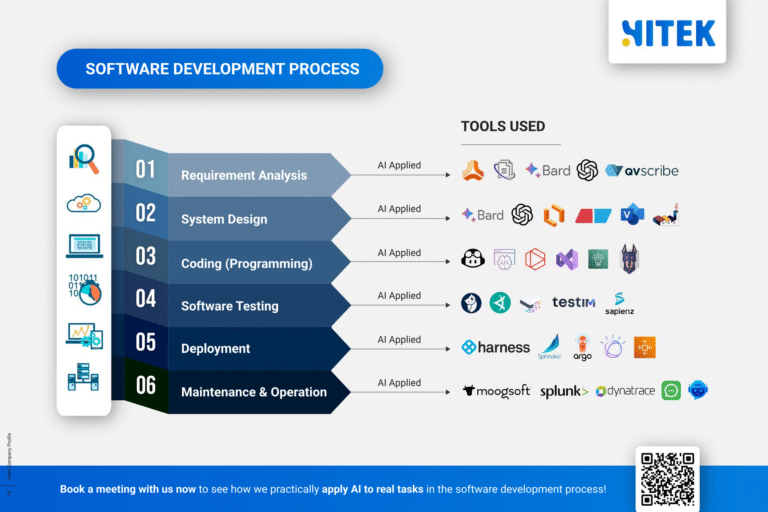Software development moves fast, and the pressure to deliver high-quality applications quickly has never been more significant. Enter Shift Left—a methodology that’s transforming how Australian tech teams build, test, and deploy software. But what exactly does it mean, and why should your team care?
Contents
ToggleUnderstanding Shift Left: The Basics
Shift Left is a proactive approach to software development that pushes testing, security, and quality assurance (QA) earlier into the development lifecycle. Instead of treating these elements as final checkpoints, teams integrate them initially, reducing costly late-stage fixes and accelerating delivery.
The term comes from “shifting” tasks left on a traditional project timeline—starting them sooner rather than later. This method aligns with modern Agile and DevOps practices, where speed and reliability are non-negotiable.
Why Shift Left Matters in Australia’s Tech Landscape
Australia’s tech industry is booming, with companies racing to innovate while maintaining robust security and performance standards. Shift Left helps teams:
- Reduce bugs early – Catching issues in development rather than production saves time and money.
- Improve security – Integrating security checks early (a practice known as DevSecOps) prevents vulnerabilities from becoming entrenched.
- Speed up releases – By eliminating later-stage bottlenecks, teams deploy faster without sacrificing quality.
How Shift Left Works in Practice
1. Early and Continuous Testing
Instead of waiting for a finished product, QA begins alongside coding. Automated unit tests, integration tests, and user acceptance testing (UAT) happen incrementally. Tools like Jira, Selenium, and Cypress support this approach.
2. Security from the Start (DevSecOps)
Security is no longer an afterthought. With Shift Left Security, developers use tools like SonarQube and OWASP ZAP to scan for vulnerabilities as they code. This is crucial in Australia, where cyber security threats are rising.
3. Collaboration Between Teams
Developers, testers, and operations teams work in sync. Platforms like GitLab and Azure DevOps facilitate real-time feedback, ensuring everyone is aligned from day one.
4. Infrastructure as Code (IaC)
By defining infrastructure through code (using tools like Terraform or Ansible), teams can test environments early, avoiding deployment surprises.
The Benefits of Shift Left for Australian Businesses
| Benefit | Impact |
|---|---|
| Faster Time-to-Market | Fewer last-minute fixes mean quicker releases. |
| Lower Costs | Fixing bugs early is cheaper than post-production patches. |
| Higher Quality Software | Proactive testing leads to more stable applications. |
| Stronger Security | Early vulnerability detection reduces breach risks. |
Challenges and How to Overcome Them
While Shift Left offers clear advantages, adopting it isn’t always seamless. Common hurdles include:
- Resistance to Change – Some developers may feel burdened by additional early-stage responsibilities. Solution: Foster a culture of shared ownership through training and incentives.
- Tool Overload – Too many testing and security tools can overwhelm teams. Solution: Streamline with integrated platforms like GitHub Actions or Jenkins.
- Skill Gaps – Not all developers are security experts. Solution: Invest in upskilling and partnerships with cybersecurity firms.
Shift Left in Action: Australian Success Stories
Several Australian companies have embraced Shift Left with impressive results:
- Atlassian integrates automated testing into its CI/CD pipelines, ensuring rapid yet reliable updates for tools like Jira and Confluence.
- Canva uses Shift Left principles to maintain high performance despite frequent feature releases.
- Afterpay employs DevSecOps to safeguard financial transactions from the earliest development phases.
Getting Started with Shift Left
If you’re ready to implement Shift Left in your workflow, follow these steps:
- Assess Your Current Process – Identify where delays and defects typically occur.
- Integrate Automation Early – Use tools like CircleCI or Bamboo to automate testing.
- Train Your Team – Ensure that developers understand security and QA fundamentals.
- Monitor and Optimize – Continuously refine your approach based on feedback.
Final Thoughts
Shift Left isn’t just a trend—it’s a more innovative way to build software. Adopting this methodology can mean the difference between leading the market and playing catch-up for Australian tech teams looking to stay competitive.
Ready to shift left? Start small, automate where possible, and watch your development process become faster, safer, and more efficient.
Looking for more insights on DevOps and Agile practices? Check out Australia’s leading tech thought leaders for expert advice.









